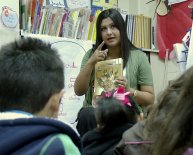
How to learn a language?
 The Okano Isao judo textbook I used to learn Japanese grammar.
The Okano Isao judo textbook I used to learn Japanese grammar.
Post reading time: 15 minutes.
Language learning need not be complicated.
Principles of cognitive neuroscience and time management can be applied to attain conversational fluency (here defined as 95%+ comprehension and 100% expressive abilities) in 1-3 months. Some background on my language obsession, from an earlier post on learning outside of classes:
From the academic environments of Princeton University (Chinese, Japanese, Korean, Italian) and the Middlebury Language Schools (Japanese), to the disappointing results observed as a curriculum designer at Berlitz International (Japanese, English), I have sought for more than 10 years to answer a simple question: why do most language classes simply not work?
The ideal system — and progression — is based on three elements in this order…
1. Effectiveness (Priority)
2. Adherence (Interest)
3. Efficiency (Process)
Effectiveness, adherence, and efficiency refer to the “what”, “why”, and “how” of learning a target language, respectively. In simple terms, you first decide what to learn, based on usage frequency (priority); you then filter materials based on your likelihood of continued study and review, or adherence (interest); lastly, you determine how to learn the material most efficiently (process).
Let’s cover each in turn. This post will focus on vocabulary and subject matter. For learning grammar, I suggest you read this short article. For “reactivating” forgotten languages — like high school Spanish — this sequence will do the trick.
Effectiveness: If you select the wrong material, it does not matter how you study or if you study – practical fluency is impossible without the proper tools (material). Teachers are subordinate to materials, just as cooks are subordinate to recipes.
Adherence: Review, and multiple exposures to the same material, will always present an element of monotony, which must be countered by an interest in the material. Even if you select the most effective material and efficient method, if you don’t adhere with repeated study, effectiveness and efficiency mean nothing. In other words: can you persist with the material and method you’ve chosen? If not, less effective materials or methods will still be better. The best approach means nothing if you don’t use it.
By analogy, if sprinting uphill with bowling balls in each hand were the most effective way to lose body fat, how long would the average person adhere to such a program?
If you have no interest in politics, will you adhere to a language course that focuses on this material? Ask yourself: Can I study this material every day and adhere until I reach my fluency goals? If you have any doubt, change your selection. Oftentimes, it is best to select content that matches your interests in your native language. Do not read about something that you would not read about in English, if English is your native language (e.g. don’t read Asahi Shimbun if you don’t read newspapers in English). Use the target language as a vehicle for learning more about a subject, skill, or cultural area of interest.
Do not use material incongruent with your interests as a vehicle for learning a language – it will not work.
Efficiency: It matters little if you have the best material and adherence if time-to-fluency is 20 years. The ROI won’t compel you. Ask yourself: Will this method allow me to reach accurate recognition and recall with the fewest number of exposures, within the shortest period of time? If the answer is no, your method must be refined or replaced.
An Example of Effectiveness (80/20) in Practice
Pareto’s Principle of 80/20 dictates that 80% of the results in any endeavor come from 20% of the input, material, or effort.
We can adapt this principle and prioritize material based on its recorded likelihood and frequency of usage. To understand 95% of a language and become conversational fluent may require 3 months of applied learning; to reach the 98% threshold could require 10 years. There is a point of diminishing returns where, for most people, it makes more sense to acquire more languages (or other skills) vs. add a 1% improvement per 5 years.
If you were a student of English (though the list can be adapted to most languages), the following words would deliver the greatest ROI per hour invested for the initial 1-3 weeks of study:
The 100 Most Common Written Words in English
1. the
2. of
3. and
4. a
5. to
6. in
7. is
8. you
9. that
10. it
11. he
12. was
13. for
14. on
15. are
16. as
17. with
18. his
19. they
20. I
21. at
22. be
23. this
24. have
25. from
26. or
27. one
28. had
29. by
30. word
31. but
32. not
33. what
34. all
35. were
36. we
37. when
38. your
39. can
40. said
41. there
42. use
43. an
44. each
45. which
46. she
47. do
48. how
49. their
50. if
51. will
52. up
53. other
54. about
55. out
56. many
57. then
58. them
59. these
60. so
61. some
62. her
63. would
64. make
65. like
66. him
67. into
68. time
69. has
70. look
71. two
72. more
73. write
74. go
75. see
76. number
77. no
78. way
79. could
80. people
81. my
82. than
83. first
84. water
85. been
86. call
87. who
88. oil
89. its
90. now
91. find
92. long
93. down
94. day
95. did
96. get
97. come
98. made
99. may
100. part
The first 25 of the above words make up about 1/3 of all printed material in English. The first 100 comprise 1/2 of all written material, and the first 300 make up about 65% percent of all written material in English. Articles and tense conjugations that can often be omitted in some languages or learned for recognition (understanding) but not recall (production).
Most frequency lists are erroneously presented as the “most common words” in English, with no distinction made between written and spoken vocabulary. The 100 most common words as used in speech are considerably different, and this distinction applies to any target language.

















